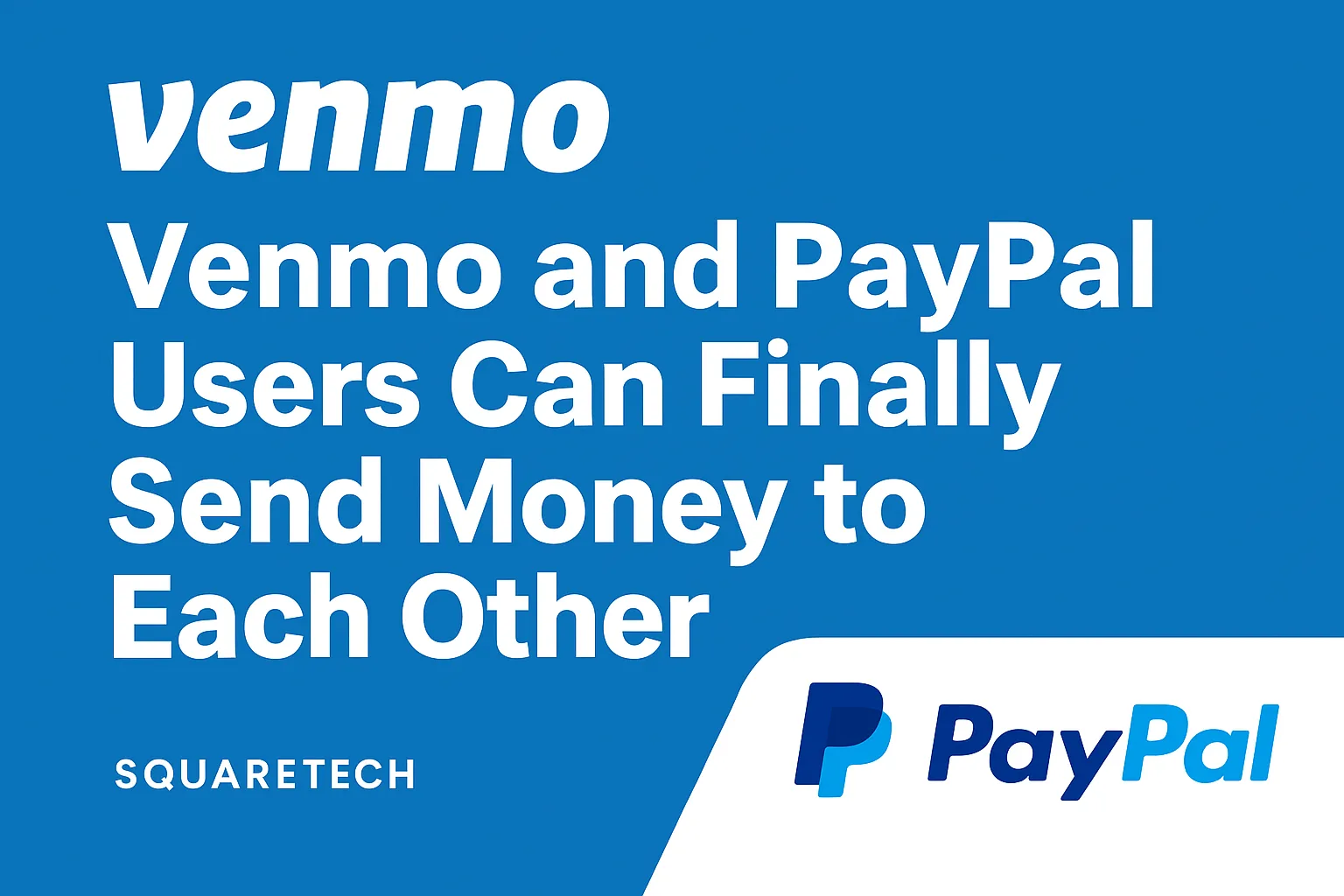Table of Contents
Venmo and PayPal Integration: A Long-Awaited Shift
Venmo and PayPal are two of the most widely recognized names in digital payments. Venmo is a favorite for peer-to-peer transfers among friends and family, while PayPal has long been the go-to platform for business payments and international transactions. Despite PayPal owning Venmo since 2013, these two platforms have never been directly compatible. Users have often expressed frustration over the lack of integration, given that both services fall under the same corporate umbrella.
Squaredtech has tracked this issue for years, as customers were forced to rely on complex workarounds to move funds between Venmo and PayPal. These included sending money through linked bank accounts, routing funds via debit cards, or relying on third-party services to bridge the gap. Such methods were inconvenient, time-consuming, and often introduced additional fees. For an industry built on speed and convenience, the lack of a direct connection was baffling.
Now, this long-standing pain point is being addressed. Starting in November, Venmo and PayPal users in the United States and worldwide will be able to send money directly to each other. This marks a major shift in the way digital transactions will function, offering smoother transfers across two of the most widely used financial apps.
Read More About Our Article of PayPal’s ‘Pay with Crypto’ Feature Slashes Global Transaction Costs by 90% Published on July 29, 2025 SquaredTech
How Venmo and PayPal Cross-Platform Transfers Will Work
Venmo confirmed the news in an official customer email. The announcement stated that Venmo and PayPal users can soon send payments across platforms without relying on third-party steps. PayPal users will be able to locate and pay Venmo accounts by entering the recipient’s phone number. Later, this functionality will expand to include email addresses as well.
This means that PayPal users who do not have Venmo accounts can still send money directly to Venmo users, eliminating a gap that has frustrated millions of people. For Venmo users who do not want to be found by PayPal accounts, privacy settings can be adjusted within the Venmo app. By going to Settings > Privacy > Find Me, users can disable the option. We recommend that all users also set their transactions to private by default under Settings > Privacy, a small but important step for ensuring greater financial privacy.
The integration is not just about convenience. It reflects PayPal’s larger strategy of broadening its payment network under what the company calls PayPal World. Announced in July, PayPal World connects PayPal with several major global payment platforms, including Mercado Pago in Latin America, NPCI International Payments Limited in India, and Tenpay Global in Asia. By extending interoperability, PayPal and Venmo are positioning themselves as leaders in international peer-to-peer payments.
Why Venmo and PayPal Integration Took So Long
From our perspective, the delay in linking Venmo and PayPal comes down to strategic incentives. On the surface, it makes no sense that two apps owned by the same company would remain siloed for so long. However, deeper analysis reveals the likely reasons.
One factor is user acquisition. By keeping the platforms separate, PayPal encouraged people to create accounts on both Venmo and PayPal, maximizing the company’s overall user base. A seamless integration would have reduced the incentive to hold multiple accounts, potentially slowing PayPal’s growth metrics.
Another factor is business structure. PayPal has historically focused on e-commerce, small business payments, and global transactions, while Venmo has branded itself as a social, peer-to-peer payment app, particularly among younger demographics. Merging these services too early might have blurred their distinct brand identities, causing confusion in the market.
Finally, technical and regulatory considerations may have played a role. Digital payments involve strict compliance measures, fraud detection systems, and security protocols. Squaredtech notes that aligning two large platforms under a single interoperable framework likely required extensive planning, testing, and risk evaluation before release.
What This Means for Users and the Digital Payments Industry
The integration of Venmo and PayPal has significant implications for users and the broader digital payments industry. First, it simplifies daily money transfers. Millions of people who previously struggled to move funds between the two platforms will now have a direct channel. This will save time, reduce reliance on banks, and minimize unnecessary transaction fees.
Second, it strengthens PayPal’s position in the global financial technology market. By creating PayPal World, PayPal is building a network of interoperable platforms that connects billions of users worldwide. Venmo and PayPal combined already represent an estimated two billion users, according to PayPal. Adding seamless cross-platform transfers further solidifies their dominance against competitors like Cash App, Zelle, and Apple Pay.
Third, it introduces new privacy considerations. The ability to find someone’s Venmo account using a phone number or email address may raise concerns for users who prefer anonymity. Squaredtech advises all users to carefully review their privacy settings to control how and when their profiles are discoverable.
Finally, it signals the direction of financial technology innovation. The trend is moving toward integration rather than isolation. Consumers want fewer barriers between platforms, whether they are transferring money locally or internationally. PayPal’s decision to connect Venmo and expand its partnerships globally reflects this demand.
Our Take on the Future of Venmo and PayPal
At Squaredtech, we view the Venmo and PayPal integration as more than just a long-overdue update. It represents a critical step in the consolidation of digital payment ecosystems. By making their platforms interoperable, PayPal has taken a bold step toward creating a universal financial network that spans both personal and business use cases.
We expect this update to accelerate user adoption, as convenience often drives customer loyalty in financial services. People value fast, direct, and secure transactions, and Venmo and PayPal are now offering exactly that. The impact will likely extend beyond casual peer-to-peer payments into the e-commerce and small business sectors. Merchants who rely on PayPal may benefit from an expanded pool of Venmo users, while Venmo’s popularity among younger consumers could feed into PayPal’s more formal payment channels.
Squaredtech also anticipates increased competition. Rival platforms will be forced to respond with new features, lower fees, or broader integrations to keep up. The financial technology market is highly competitive, and innovations like this often set off ripple effects across the industry.
Conclusion
The integration of Venmo and PayPal is a landmark update for digital payments. For years, users were forced to rely on frustrating workarounds to transfer money between two services owned by the same parent company. With the launch of direct interoperability, those barriers are finally gone.
This change reflects not only a new level of convenience for users but also a strategic move by PayPal to expand its influence globally through PayPal World. With over two billion users and new cross-platform capabilities, Venmo and PayPal are positioned to shape the future of digital finance.
We will continue monitoring this rollout and analyzing its impact on both users and the financial technology sector at large. What is clear is that Venmo and PayPal are no longer separate silos. Together, they are building a connected network that could redefine how money moves across borders, businesses, and daily life.
Read More About Our Article of Why Are Saudi Arabia Stocks Rising While Global Markets Crash? Published on April 11, 2024 SquaredTech
Stay Updated: Money Talks


